Contents
Objectives
Upon completing this lesson students will be able to:
- Explain the Check-in and Check—out system
- Explain the basic concepts of mine transportation
- Explain the basic concepts of mine communication
Reading
Check-in and Check-out Procedures
The check-in and check-out system is used to keep a current record of all mine personnel and visitors present in the mine. This information is essential during a mine emergency. By law, this record is kept on the surface in a place safe from fire or other hazard.
- In the event of an emergency, this system aids mine rescue in identifying and locating any miner who fails to return and check-out. Management can determine where the miner was working and thereby focus mine rescue efforts.
- By checking-out of the mine when leaving, mine rescue teams will not waste time and risk their lives looking for someone who is not in the mine at all.
- The system is also used to locate a miner in case of a personal emergency i.e. a sick or injured family member etc.
The check-in and check-out procedure uses an identification tag called brass. Brass has your name or some other identification number stamped on it. A second brass may also be permanently attached to your lamp belt.
The company policy is that all miners follow check-in procedures when entering the mine. Place your brass on a hook at the station. When leaving the mine check-out by removing your brass from the hook. Keep brass for the next work day.
Mine Transportation Systems
- Man trips are designed to carry a certain number of miners. Attempting to crowd more miners on a man trip than it is designed for is a safety hazard and should be avoided.
- When boarding the man trips other than cages, both hands should be emptied of tools and lunch pail. You need your hands to assist getting into the man trip. Place your tools and lunch pail in the man trip before boarding.
- Once in the man trip and underway, keep your head, arms and legs inside. You could accidentally hit the side or piece of equipment when leaning out. Also make sure that any equipment or tools such as picks, shovels or slate bars do not stick out of the car or cage.
- Haulage of ore is done by rubber tired or track vehicles. Young buggies, ore cars, or muck cars are used to transport the ore from the drifts and stapes to belt lines and/or to the ore skip which hauls ore up the shaft to the mill.
- Equipment trips are used to bring various supplies into the mine. These supplies include mining machinery, fuel and explosives.
- Hazards involved in transportation system.
- Objects protruding from the sides or the back, such as rock, timber, or pipes.
- Falling out of or off moving equipment due to recklessness, bumps, quick stops or horseplay.
- Injury to head, arms, hand or legs, that are hanging out of the trip and hit a rib or other object.
- Flying objects, such as lunch pails, tools, or rock, when the trip stops suddenly, derails, or is involved in a collision.
- Body parts hanging out of trip and making contact with an electrical power source.
- Collision of trip due to excessive speed and subsequent loss of control or brake failure.
- Collision of trip with other vehicle or striking person due to poor visibility or inattention.
- Injury to eyes or lungs from dust or small particles.
- Materials on the cage not being secured correctly.
Signs
- Signs need to be posted wherever it’s necessary to regulate, warn, direct, or inform traffic on haul roads or around surface installations. Signs can be permanent or portable to meet the changing conditions at the mine. Remember, overcrowding of signs at one location may cause confusion and lead to accidents.
- Signs need to be positioned with respect to each situation. Management must take into account, the time it takes for a driver to see and read a sign and the mechanical braking and stopping distances of vehicles in operation at each site.
- Signs must be visible at all times. Size, height and lateral placement are important factors in determining whether signs will be illuminated by headlights.
Stop Signs
Stop signs should be located as close to the point at which the vehicle must stop.
Use “stop ahead’ signs to warn drivers where there is limited sight distances. All way stop or 4-Way stop signs should be placed at intersections that require all vehicles to stop.

Yield Sign
Yield signs need to located as close as possible to the point where vehicles are supposed to yield. Yield signs assign right-of-way where secondary roads intersect main roads or where two roads intersect and stopping is not required.
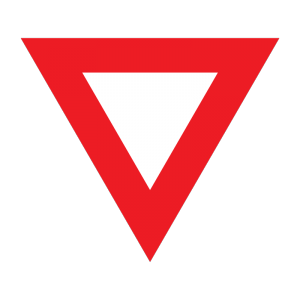
Speed Limit Signs
Speed signs are based upon factors such as road conditions, grades, visibility, curves, and mechanical capability of the equipment in use at each mine operation. Drivers should always obey posted speed signs.
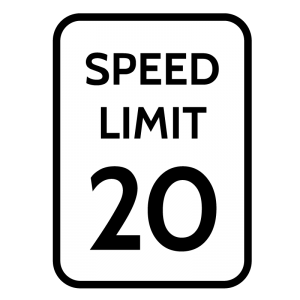
No passing signs are usually placed at the beginning and end of a restricted area where passing other vehicles are not allowed. A “pass with care’ sign indicates the end of a no passing zone.
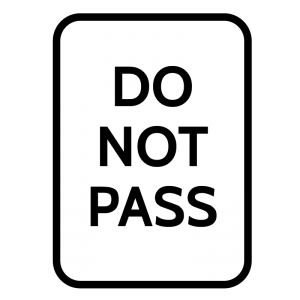
A Do Not Enter sign is placed at the end of a one way road to keep traffic from entering the roadway while traveling in the wrong direction. “WRONG WAY’ signs supplement Do Not Enter signs
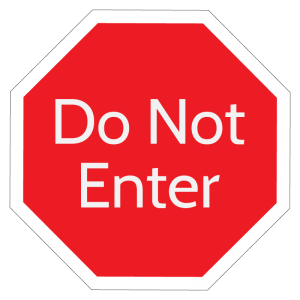
Mine management should limit customer and over-the-road drivers’ access to hazards while heavy equipment is being used to load trucks.
![An Important [message] Sign](https://millops.community.uaf.edu/wp-content/uploads/sites/605/2016/01/important-300x300.png)
These signs provide drivers with advanced warning of steep downgrades where special caution is needed to be exercised. Post the grade and length of grade and any special precautions.
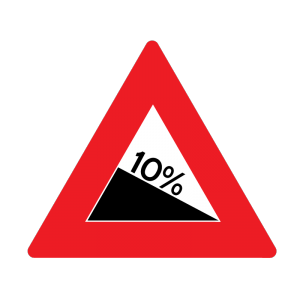
These signs are usually posted on roadways where work is being done. Mine operators should posted these signs in all areas where trucks may come in contact with workers.
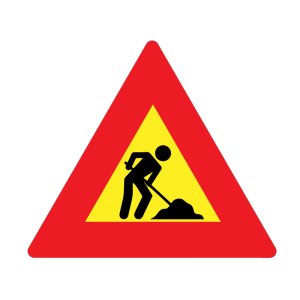
These signs warn drivers to watch out for falling rocks and other materials while they are driving through an area. Restricted access may be required based upon the hazard
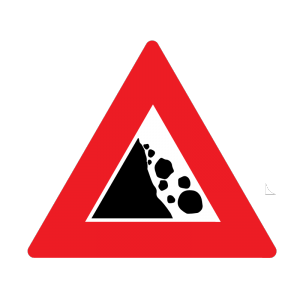
These signs should be used in areas where explosives are in use. They can be used to deny access to a blast are or used as a placard on vehicles carrying explosives.
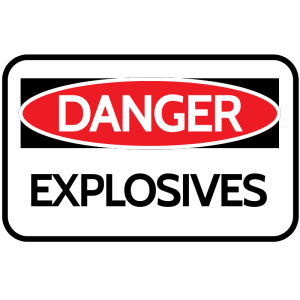
These signs are posted to limit personnel from entering hazardous or restricted areas. Drivers should not enter these areas either while driving or when they leave the vehicle.
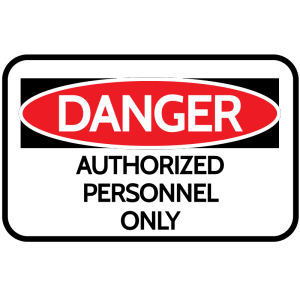
These signs warn all personnel to the hazardous conditions that may exist in an area or where flammable and combustible materials are in use or stored
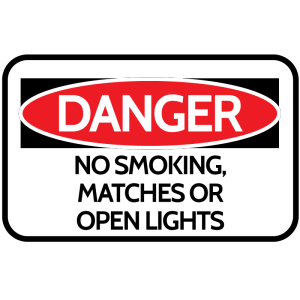
A high voltage sign warns all personnel of electrical hazards. Drivers should look for signs that warn about “overhead lines’ so they may avoid a common hazard in mining.
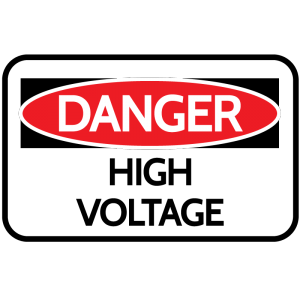
Warning Signs
- Help to control traffic flow
- Warn personnel on-foot of truck traffic
- Establish safety zones where hazards exist
- Remind all employees to be safe
- Limit visitors from entering the unfamiliar
- Prevent accidents and injuries
Mine Communication System
Mine communications are important for routine messages. Requests for supplies or assistance with operational problems save time when done over an efficient communications system. In the case of accident or other emergency, people in the mine must be able to tell people on the surface what happened so that proper measures can be taken quickly.
- The law requires that two-way communication systems be provided at several locations in the mine. These include all levels of the main shaft and slopes, and between the surface and each working section. Phone systems are commonly used to provide two-way communications.
- Communications with the hoistman is done by pull bottles located at each level of the shaft.
Equipment signals are signals mounted on equipment to warn the operator or others of some particular condition of the vehicle.
- Backing-up signals warn others that the vehicle is in reverse gear and that they should immediately move out of its way.
- A bell may sound when a motor starts up.
- Equipment status signals inform the operator of critical status levels of various components of the equipment, such as low oil or hydraulic pressure.
Mine emergency warning signals alert miners to immediately initiate mine evacuation procedures.
- Warning signals inform miners of the emergency, and can be of two types.
- Stench canisters containing a smell of rotten eggs.
- Alarms located throughout the mine.
- Flashes
- Another important emergency signal is the escapeway marking signs located throughout the mine. Their directional information guides miners through the escapeways system.